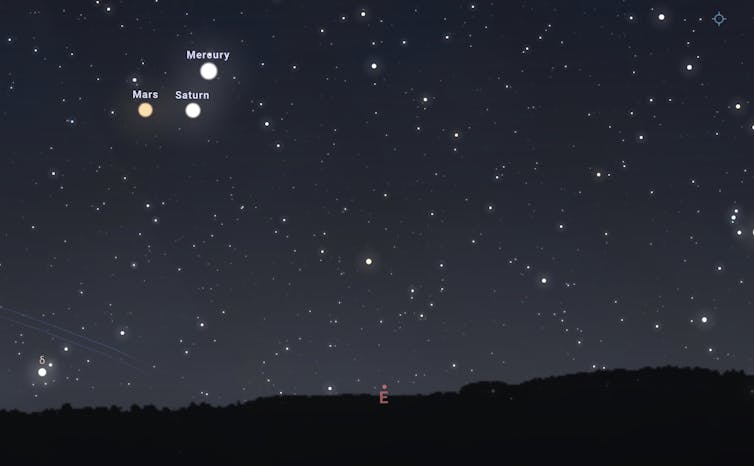Source: The Conversation (Au and NZ) – By Adrian Beaumont, Election Analyst (Psephologist) at The Conversation; and Honorary Associate, School of Mathematics and Statistics, The University of Melbourne
This article covers the March South Australian state election and November Victorian state election. The United States will hold midterm elections in November, giving Democrats an opportunity to take control of Congress.
The South Australian state election
will be held on March 21. All 47 lower house seats will be elected in single-member districts, and 11 of the 22 upper house seats will also be up for election using statewide proportional representation with preferences.
Labor won the 2022 SA election by 27 lower house seats to 16 for the Liberals with four independents, defeating a one-term Liberal government. Labor won the two-party vote at that election by 54.6–45.4.
There have been three SA polls taken since last May’s federal election where Labor won a surprise landslide. A May YouGov poll gave Labor a 67–33 lead, an October DemosAU poll gave them a 66–34 lead and an early December Fox & Hedgehog poll gave Labor a 61–39 lead.
If the election results reflect the DemosAU and YouGov polls, Labor would win the second biggest landslide at an Australian state or federal election, behind only the Western Australian 2021 Labor landslide (69.7–30.3 to Labor).
The 11 upper house seats up for election this year were last elected in 2018. Ignoring defections, Labor is defending four, the Liberals four, SA-Best two and the Greens one. The 11 continuing seats (elected in 2022) are five Labor, four Liberals, one Green and one One Nation. SA-Best was Nick Xenophon’s former party and it was popular in 2018.
On lower house polls, it’s very likely that Labor will gain at least one seat from 2018, giving Labor and the Greens at least a combined 12 of the 22 upper house seats, enough for a Labor/Greens majority.
Victorian election: November 28
The Victorian state election will occur on November 28. All 88 lower house seats will be elected using single-member districts and all 40 upper house seats will be elected by proportional representation with preferences in eight five-member districts.
The Poll Bludger’s Victorian BludgerTrack indicates Labor had fallen behind the Coalition in early 2025, but the May federal Labor landslide saw Victorian Labor surge back to the lead. Labor has slipped since then, and it’s now roughly tied.
While Labor is still competitive in the polls, Labor Premier Jacinta Allan’s ratings are dismal, with a recent Redbridge poll and Newspoll both giving her a net approval below -40.
As voters focus more on state politics in the lead-up to the election, I believe the Coalition is more likely to improve as Labor is dragged down by Allan. By the election, Labor will have governed in Victoria for 12 consecutive years and 23 of the last 27, so there should be an “it’s time” factor.
Victoria is the last Australian jurisdiction to still use the discredited “group voting ticket” system for its upper house elections. The parliamentary electoral matters committee has proposed scrapping this system and holding a referendum to allow more members to be elected per district.
Any change to the upper house electoral system would need to pass both houses of the current Victorian parliament by early this year to be used at the election. Labor has failed to reform the upper house at previous opportunities before both the 2018 and 2022 elections.
US midterm elections: November 3
United States midterm elections will be held on November 3. All 435 seats in the House of Representatives will be elected using single-member districts. In the Senate, 35 of the 100 senators will be up for election using single-member districts where a state is the district.
Although first past the post is used in most US states instead of preferential voting, minor parties usually get under 2% of votes, so Democratic or Republican candidates usually win outright majorities.
In 2024, Republicans won the House by a 220–215 margin over Democrats and the Senate by 53–47. All of the House and one-third of the Senate is up for election every two years, with this year’s 35 Senate elections including two specials.
Of the 35 senators up for election, Republicans hold 22 and Democrats 13, but only two Republican seats are thought vulnerable: Maine and North Carolina. At the 2024 presidential election, Kamala Harris won Maine
by 6.9 points and Donald Trump only won North Carolina by 2.2 points. Trump won all other states Republicans are defending by at least a double-digit margin.
It’s become increasingly difficult for Democrats to win the Senate, as the two senators per state rule skews Senate elections towards low-population, rural states. Even if Democrats gain Maine and North Carolina, Republicans would still hold a 51–49 Senate majority.
In analyst Nate Silver’s aggregate of US national polls, Trump’s net approval is currently -12.0, with 54.0% disapproving and 42.0% approving. In Fiftyplusone’s aggregate of the generic ballot, Democrats lead Republicans by 44.1–39.7, a 4.4-point margin.
At the 2024 House elections, Republicans won the popular vote by 49.8–47.2, a 2.6-point margin. The swing to the Democrats suggests they will gain control of the House on current polling, but not the Senate.
Adrian Beaumont does not work for, consult, own shares in or receive funding from any company or organisation that would benefit from this article, and has disclosed no relevant affiliations beyond their academic appointment.
– ref. Who’s going to the ballot box this year? Here’s the election state of play – https://theconversation.com/whos-going-to-the-ballot-box-this-year-heres-the-election-state-of-play-272608



































